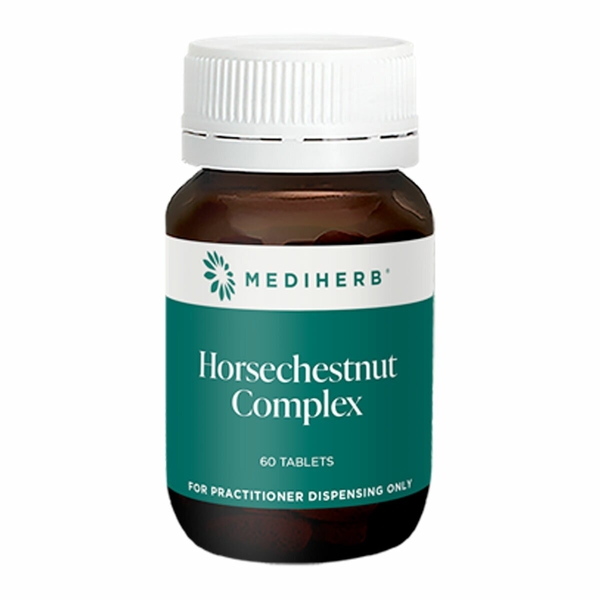
Butcher's broom
Scientific names: Ruscus aculeatus, Oxymyrsine pungens, Ruscus dumosus, Ruscus flexuosus, Ruscus laxus, Ruscus parasiticus, Ruscus ponticus
Family: Asparagaceae
Alternate names: Balai du Boucher, Box Holly, Fragon, Fragon Épineux, Fragon Faux Houx, Fragon Piquant, Houx Frelon, Jew's Myrtle, Knee Holly, Kneeholly, Kneeholm, Kneeholy, Petit Houx, Pettigree, Stickmyrten, Sweet Broom, Rusci Aculeati, Rusci Aculeati Rhizoma, Rusco
Actions: Anti-inflammatory, Vasoconstrictive/ vasotonic
Background
Butcher's broom (Ruscus aculeatus) is a small evergreen shrub native to Europe, Asia, and North Africa. The root is used to make medicine.
Chemicals in butcher's broom might cause the blood vessels to narrow or constrict. This might improve blood circulation in the legs.
People use butcher's broom for poor circulation that causes the legs to swell. It is also used for swelling of the arms, varicose veins, and other conditions, but there is no good scientific evidence to support these uses.
Don't confuse butcher's broom with scotch broom or Spanish broom. These are not the same.
Chemicals in butcher's broom might cause the blood vessels to narrow or constrict. This might improve blood circulation in the legs.
People use butcher's broom for poor circulation that causes the legs to swell. It is also used for swelling of the arms, varicose veins, and other conditions, but there is no good scientific evidence to support these uses.
Don't confuse butcher's broom with scotch broom or Spanish broom. These are not the same.
Safety Safety definitions
When taken by mouth: Butcher's broom is possibly safe when products containing the rhizome extract or root extract are used for up to 3 months. Side effects might include stomach upset, nausea, vomiting, diarrhea, and heartburn.
When applied to the skin: There isn't enough reliable information to know if butcher's broom is safe. It may cause allergic reactions in some people.
When applied to the skin: There isn't enough reliable information to know if butcher's broom is safe. It may cause allergic reactions in some people.
Special Precautions & Warnings:
Pregnancy and breast-feeding: There isn't enough reliable information to know if butcher's broom is safe to use when pregnant or breast-feeding. Stay on the safe side and avoid use.Effectiveness
NatMed Pro rates effectiveness based on scientific evidence according to the following scale: Effective, Likely Effective, Possibly Effective, Possibly Ineffective, Likely Ineffective, Ineffective, and Insufficient Evidence to Rate.
Possibly effective Effectiveness definitions
- Poor circulation that can cause the legs to swell (chronic venous insufficiency or CVI). Taking butcher's broom by mouth, alone or with vitamin C and hesperidin, seems to help with the symptoms of this condition, such as pain, heaviness, cramps, itching, and swelling.
Dosing & administration
Butcher's broom has most often been used by adults in doses of 75-300 mg by mouth daily for up to 3 months. Speak with a healthcare provider to find out what dose might be best for a specific condition.
Interactions with pharmaceuticals
Medications used for high blood pressure (Alpha-adrenergic antagonists)
Interaction Rating=Moderate Be cautious with this combination.
Butcher's broom might increase blood pressure. Taking butcher's broom might reduce the effects of blood pressure medications. Monitor your blood pressure closely.
Stimulant Medications (Alpha-adrenergic agonists)
Interaction Rating=Moderate Be cautious with this combination.
Butcher's broom might increase blood pressure, make the heart beat faster, and stimulate the brain. Stimulant medications have similar effects. Taking them together with butcher's broom might make the blood pressure go too high or the heart beat too fast.
Interactions with herbs & supplements
Herbs and supplements with stimulant properties: Butcher's broom might have stimulant effects. Taking it with other supplements with similar effects might increase the chance of side effects, including rapid heartbeat and high blood pressure. Examples of supplements with this effect include 1,3-DMAA, bitter orange, caffeine-containing products, DMHA, and ephedra.
Yohimbe: Butcher's broom might cause the blood vessels to narrow or constrict. Yohimbe is an herb that might cause the blood vessels to expand. Combining these two herbs might decrease the effectiveness of both.
Yohimbe: Butcher's broom might cause the blood vessels to narrow or constrict. Yohimbe is an herb that might cause the blood vessels to expand. Combining these two herbs might decrease the effectiveness of both.
Interactions with foods
There are no known interactions with foods.
vital.ly has licensed monographs from TRC Healthcare.
This monograph was last reviewed on 18/11/2024 11:00:00 and last updated on 24/11/2014 21:07:13. Monographs are reviewed and/or updated multiple times per month and at least once per year.
Natural Medicines disclaims any responsibility related to medical consequences of using any medical product. Effort is made to ensure that the information contained in this monograph is accurate at the time it was published. Consumers and medical professionals who consult this monograph are cautioned that any medical or product related decision is the sole responsibility of the consumer and/or the health care professional. A legal License Agreement sets limitations on downloading, storing, or printing content from this Database. No reproduction of this monograph or any content from this Database is permitted without written permission from the publisher. It is unlawful to download, store, or distribute content from this site.





